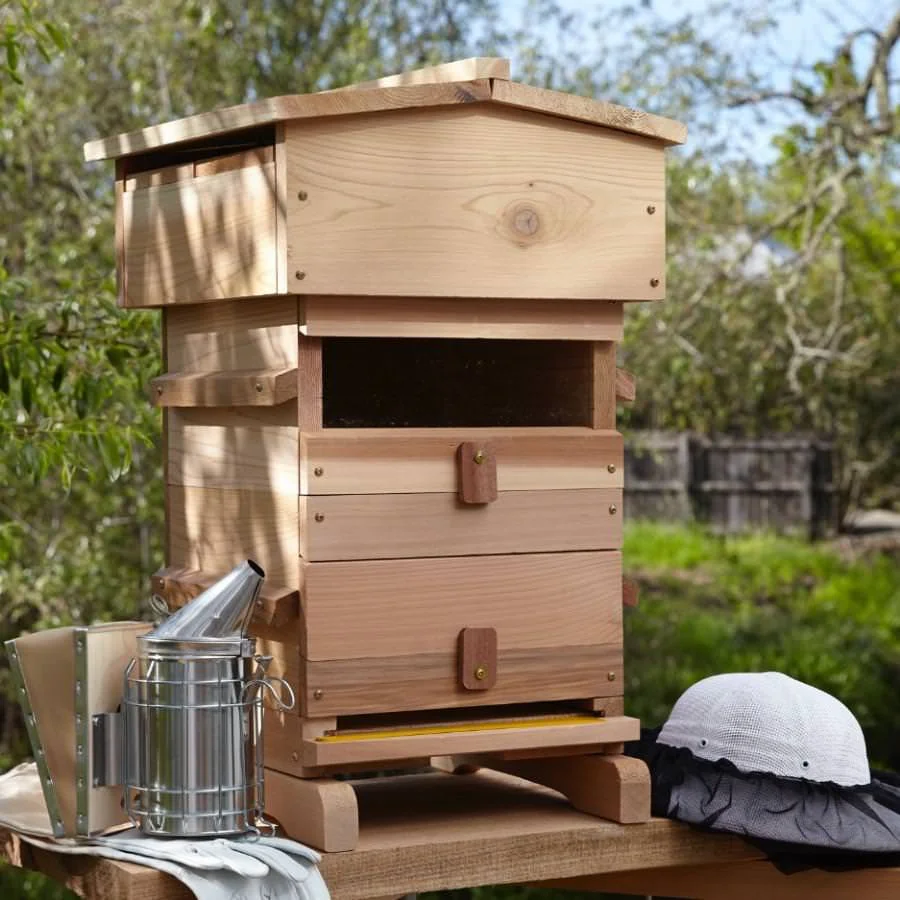Our First Hives
- Alexa

- Jul 11, 2023
- 3 min read
First-Year Beekeepers Take on the Challenge
of Building Our First Hives

When someone thinks of a beehive, more than likely they're picturing a tall stack composed of boxes placed one on top of another like in the picture to the right. Called the Langstroth Hive it quickly gained popularity after its development in the mid-19th century. A Langstroth Hive consists of several boxes that hold between 8 and 10 frames each. The bottom box holds the hives brood (eggs and larvae) and is where the Queen lives. This box is placed in the bottom position. Subsequent boxes, which are placed on top of the brood box, are called Honey Supers and contain (you guessed it) honey. There can be more than one brood box in a hive, but the supers are always placed on top of the brood boxes.
The Langstroth Hive isn’t the only type of hive a beekeeper can use. In fact, there are many types of hives, such as the Top Bar, Warre, Layens and the Long Langstroth (Long Lang). Each of these hives vary a bit from each other with some using frames, while others don't, and some being horizontal instead of vertical.
After a lot of research and asking tons of questions from fellow beekeepers, Owen and I decided to use the Long Lang for our first colonies of bees. Our main reason is not wanting to lift the supers off the hive to reach the brood box during inspections. Supers can weigh anywhere between 40 and 90 pounds depending on their size, and while I’m used to lifting heavy items, the thought of lifting 40+ pounds was a little daunting. We liked that we could open the lids to our hives and have both brood and honey in front of us at waist level. Plus, I learned that bees in Long Langs tend to produce more honey than in the traditional Langstroth hive. More honey and we don’t have lift heavy supers? Sounds like a good deal to me.

The downfall to using Long Langs is that they are not readily available in stores the way a traditional Langstroth hive is. The ones that are available to purchase on sites like Etsy are custom made and much more expensive than a traditional Langstroth. With our budget in mind, Owen and I decided to try our hand at making the hives ourselves. We had been told about a website, horizontalhives.com, that had instructions on how to make Long Lang hives. I printed off a copy of the plans and we headed to Lowe’s to buy the materials. Since Owen and I didn’t know much about building anything, except maybe IKEA furniture, my husband Scott stepped in to help us out. Well, if I must be honest, it was more “help Owen out” since it was the two of them who built the hives; I mostly watched. We ran into a few challenges along the way. I wanted to make some modifications to the plans, such as wood slats for an inner cover, a shelf for a hive beetle trap, and screened bottom to assist in ventilation during our hot Mississippi summers. I think my aspirations were a bit lofty for a first-time build and those modifications didn’t buff out. As a result, we ended up with hives that are a bit too deep, and our bees now enjoy building burr comb on the bottom of the frames,
The one modification we managed to pull off successively was additional vent holes. To help with cooling during our hot Mississippi summers we placed three screened vent holes on the bottom of the hive box, as well as two in the lid. We also added insulation to the lid with three screened vent holes. When it comes time to winterize the hives we can simply plug up the vent holes to keep the chill out.

All-in-all, I'm very pleased with the hives and I'm looking forward to building more. I think for the next hives we're going beekeeper Frederick Dunn's plans and see how that goes. Those plans seem to be easier for us to follow so I'm hoping to pull off some of the modifications I want to try. We'll be sure to let you know how it goes.









Excellent work! Can't wait to hear how it goes. :)